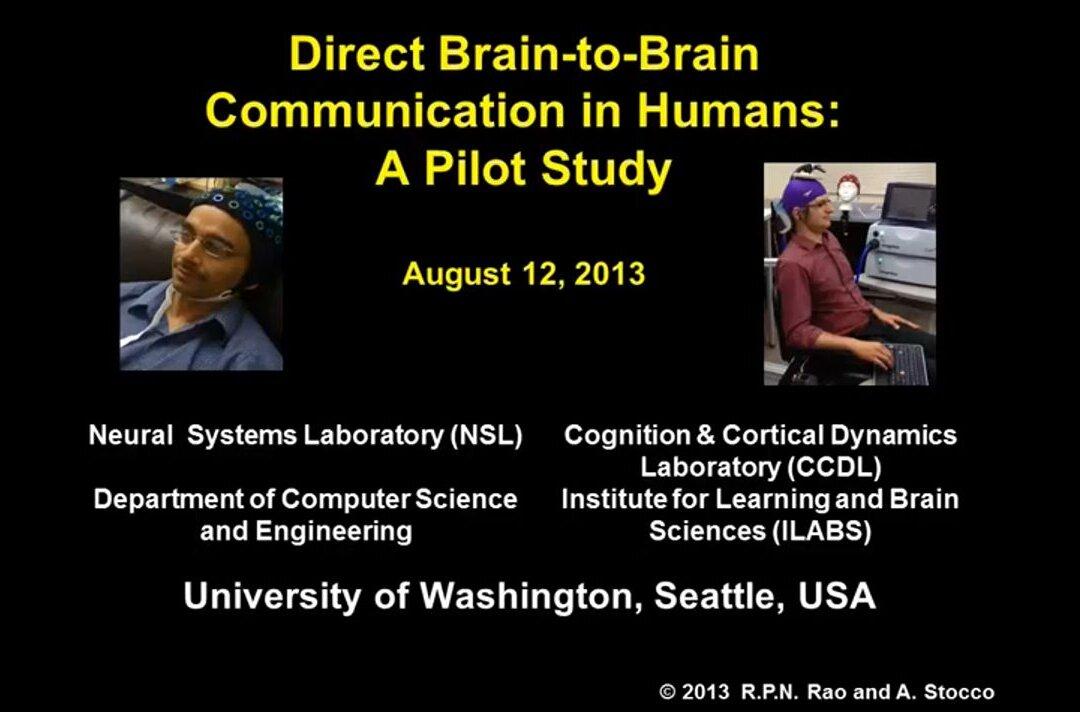The first “mind meld”--the term used in “Star Trek”--took place between two humans, allowing a researcher to send brain signals through the Internet to control the motion of another person’s hand, scientists said.
Researcher Rajesh Rao sent a brain signal to Andrea Stocco, who was on the other side of the campus, causing Stocco’s finger to move on the keyboard. The two carried out the experiment at the University of Washington in Seattle, according to the school’s website on Tuesday.
“The Internet was a way to connect computers, and now it can be a way to connect brains,” Stocco said. “We want to take the knowledge of a brain and transmit it directly from brain to brain.”
The two believe it was the first “mind meld” between humans. Similar experiments were previously done on humans interfacing with rats.
“On Aug. 12, Rao sat in his lab wearing a cap with electrodes hooked up to an electroencephalography machine, which reads electrical activity in the brain. Stocco was in his lab across campus wearing a purple swim cap marked with the stimulation site for the transcranial magnetic stimulation coil that was placed directly over his left motor cortex, which controls hand movement,” the university’s website states.
In the experiment, Rao played a simple video game with his mind. When he was supposed to fire a gun in the game, he just thought about moving his right hand to do so, without actually moving it. On the other side of the campus, Stocco, who had noise-canceling earbuds on and wasn’t looking at a computer screen, involuntarily moved his hand.
“It was both exciting and eerie to watch an imagined action from my brain get translated into actual action by another brain,” Rao said. “This was basically a one-way flow of information from my brain to his. The next step is having a more equitable two-way conversation directly between the two brains.”





